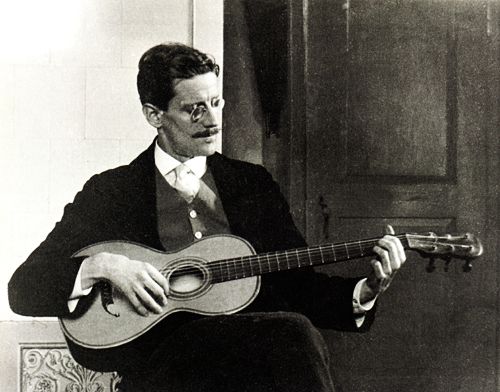
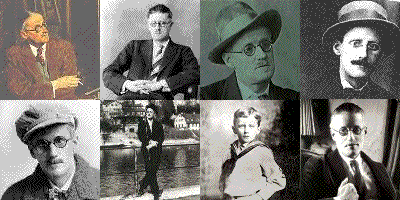
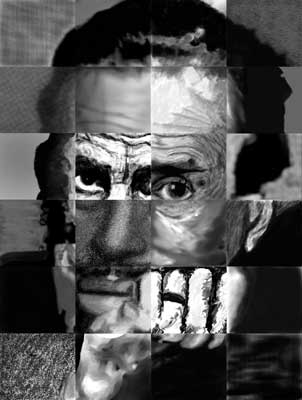
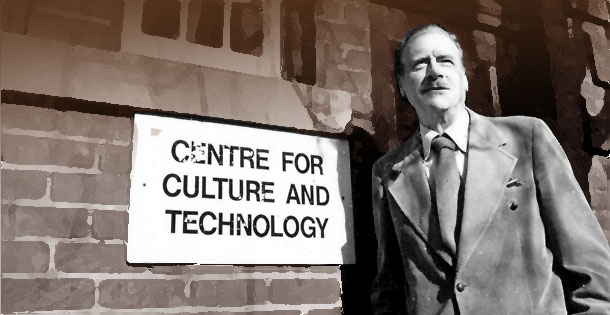
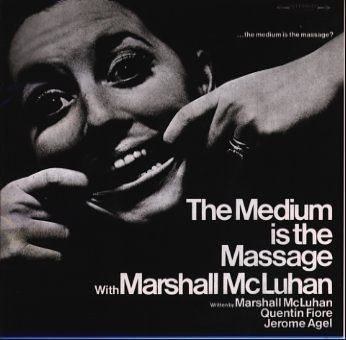
Program Notes for DREAM AWAKE by Gerry Fialka
310-306-7330 pfsuzy@aol.com
https://www.laughtears.com/ and http://www.venicewake.org/
DREAM AWAKE - HOW JAMES JOYCE INVENTED EXPERIMENTAL CINEMA & DISGUISED IT AS A BOOK - Paramedia-ecologist Gerry Fialka's challenging interactive workshop probes how Joyce's 1939 book/epic collage/meta-narrative film FINNEGANS WAKE (and Marshall McLuhan's Menippean Satirized translation of it) presaged experimental & political activist cinema. How did the WAKE influence Hollis Frampton, Owen Land, John Cage & Peter Greenaway? How & why does the WAKE tell the history of everything that ever happened and will happen? Why did Joyce hang out with Masons and reveal their secrets? Why did the British secret police study the WAKE? How did the WAKE invent MK-ULTRA, the CIA's mind control program? How does the WAKE write a detailed history of the future? How and why did Joyce anticipate the Facebook-Google-Wiki-Twitter-YouTube-Blogosphere swirl (social networking), TMZ, Girl Talk and whatever comes after the Internet? Harry Smith, who claimed Giordano Bruno invented cinema, stated that the function of film viewing is to put people to sleep - dreaming awake. With ultra-rare film clips. ReJoyce interconnecting Finneganese "funny funereels," "allnights newseryreel," "they leap looply, looply, as they link to light," "cellelleneteutoslavzendlatinsoundscript," and "a ... riot of blots and blurs and bars and balls and hoops and wriggles and juxtaposed jottings linked by spurts of speed." Fun for all at Finnegans Wake. Premiere presented by LitQuake.org & SFCinematheque.org October 13, 2009. http://www.sfcinematheque.org/#/calendar/200910130/
"I am really one of the greatest engineers...the initiating spark for a perpetual motion text machine." - How Joyce Wrote Finnegans Wake.
Narrative is born among the "animal necessities of the spirit" because we are "waiting to die." - Hollis Frampton.
"I am boring through a mountain from 2 sides. The question is, how to meet in the middle."- James Joyce (=JJ).
"What is the novel about, and what - if anything- is it besides a novel?"...It is as certain as anything can be in the Wake that the passage beginning with 'A cry off' (558), which Edmund Wilson described as the only waking moment...is in fact the beginning of a part of H.C.E.'s dream in which he takes his wife to the cinema." - James Athterton's The Books at the Wake.
La Poste writer reacts to Lumiere Cinematographe film screening Dec 30, 1895: "When these gadgets are in the hands of the public, when anyone can photograph the ones who are dear to them, not just in their motionless form, but with movement, action, familiar gestures and the words out of their mouths, then death will no longer be absolute, final."
"Cinema is much too rich a medium to be left to storytellers." -Peter Greenaway.
"To define is to kill. To suggest is to create." - Mallarme.
"The crux of the biscuit is the apostrophe." -Frank Zappa.
"Joyce realized that technologies were the analogical mirrors of our biological process. So, perceptually interlocking Joyce to Haeckel’s insight, of ontogeny recapitulates phylogeny; microbiology recapitulates macrobiology. And he realized our human technology is re-created biology, like: the book is an extension of the eye, the radio is the ear, etc., and Joyce conceived the sensory analogues. Then, that technologies, which become environments, could be perceived as a symbolic map of the stages of that evolution; i.e., techni evolving. And the stages would have a biological reference point. For example, Joyce’s great line on 52 of ‘The Wake’: "Television kills telephony in Brothers’ broil". (You’re naming 2 technologies). "Our eyes demand their turn." (Now the object is switched to biological forms: eyes). "Let them be seen"! (Then, the question is what and who was to do the seeing). So, Joyce was always playing between art and science (man’s means for measuring her/himself and humanity, i.e., technological constructs), AND nature. But nature was still within the art and science constructs, as in the percepts of Bucky Fuller: That there was nature. So, Joyce showed: The ontogeny that was James Joyce’s life replayed (recapitulated) the history of the species; the technoid species! Thus, Joyce saw that he learned writing (in "The Portrait Of The Artist As A Young Man"). Then, when he was older , he wanted to start a cinema, in Dublin. And he then got involved in radio. And, in all the technologies Joyce experienced in his 57 years - he saw, that the individuated cycle of techni he was involved in ontologically." - Robert Dobbs (=RD fivebodied.com). Essential reading: http://mycanvassesaresurrealist.blogspot.com/2008/07/bob-dobbs-explains-finnegans-wake-via.html
"Our wholemole millwheeling vicociclometer, a tetradomational gazebocroticon (the "Mamma Lujah" known to every schoolboy scandaller, be he Matty, Marky, Lukey or John-aDonk), autokinatonetically preprovided with a clappercoupling" - FINNEGANS WAKE (=FW).
McLuhan's Tetrad: 1) What does it enhance or intensify? 2) What does it render obsolete or replace? 3) What does it bring back that was previously obsolesced? 4) What does it become when pressed to an extreme, what does it flip into?
"Joyce had essentially discovered the tetrad once he had seen through the television form. He even organized the large-scale structure of the WAKE on the tetrad: Book One deals with the amplification of technology. Book Two is concerned with the obsolescence of technologies. Book Three deals with the retrieval of forms, and Book Four is modeled on its "flipping-into-its-opposite" feature of technologies." -RD.
"in deesperation of deispiration at the diasporation of his diesparation...was found of the round of the sound of the loud of the" -Tetradic Finneganese.
"The basic fact to keep in mind about the movie camera and projector is their resemblance to the process of human cognition." - Marshall McLuhan (=MM, "Meereschal MacMuhun, pg254 of FW).
"What McLuhan contributed were not ideas, arguments, theories or critiques, but intuitions, perceptions, wandering explorations of unexplored terrain, satiric responses and poetic reactions...His primary game: teasing people into believing his percepts to be theoretical concepts..." -Donald Theall, The Virtual MM.
"Artists are engaged in writing a detailed history of the future because they are the only people who live in the present." - Wyndham Lewis.
"Joyce uses the pun as a way of seeing the paradoxical exuberance of being through language." -MM.
"Objects are unobservable. Only relationships among objects are observable. So if you think that the question, "Will we ever learn?", implies a goal, a particular point and time we will arrive at, a particular object, we will never know that. Because objects like that do not exist, only relationships among objects exist. It is like asking, "Will there ever be silence?" It's like, "Will you ever die?" Well, you'll never know because to be dead is a specific experience that seems to imply isolation which could not be known. Because nothing exists in isolation, you will never experience death. You will only experience those things that involve relationships. The end point of time, death, cannot be experienced because it's not a relationship among events." -RD.
"The world of discontinuity came in most vividly with the telegraph and the newspaper. The stories in the newspaper are completely discontinuous because they are simultaneous. They're all under one dateline, but there's no story line to connect them. TV is like that. It's an X-ray, mosaic screen with the light charging through the screen at the viewer. Joyce called it, "the charge of the light barricade." In fact, FW is the greatest guide to the media ever devised on this planet, and is a tremendous study of the action of all media upon the human psyche and sensorium. It's difficult to read, but it's worth it." -MM.
"In illuminating the night world, private and collective, Joyce in FW has only done what the electric light had done in abolishing the old divisions between night and day, and between inner and outer space, with respect to human work and play. As soon as the complementary dynamics of inner and outer, conscious and unconscious were displayed, it be came easy to observe the operation of languages in shaping human assumptions, both sensuous and psychological. FW is an encyclopedia of lore concerning the origins and effects of words, of writing, of roads and bricks, of telegraph, radio, and television on the changing hues of the human spectrum." -MM.
"FW is the history of technology and what it’s done to us. The electronic environment has swallowed visual space. The Wake preserve visual space and satirizes the information overload that bombards us daily. By studying the Wake. One can recognize the effects of visual space and acquire a passport to the global Esperanto. If you just take sips of it, the Wake is like the mechanical-tactile music of rock’n’roll in print and must be read aloud."-RD.
"American Indians would go from tent to tent looking for others to ask them questions concerning their dreams from the night before in effort to recall them. Then when the right question was asked, that person would be a co-creator of the dream, the co-dreamer." -?
"Any movement of appetite within the labyrinth of cognition is a 'minotaur' which must be slain by the hero artist. Anything which interferes with cognition, whether concupiscence, pride, imprecision or vagueness is a minotaur ready to devour beauty. So that Joyce not only was the first to reveal the link between the stages of apprehension and the creative process, he was the first to understand how often the drama of cognition itself was the key archetype of all human ritual, myth and legend. And thus he was able to incorporate at every point in his work the body of the past in immediate relation to the slightest current of perception." -MM.
"My role model in all this is James Joyce - the way he looked at the novel and tried to come up with a new form of telling a story in Ulysses and Finnegans Wake." -Owen Land.
"Everything we do is music." - John Cage.
"(In Joyce) words come as close to turning into musical notes as words can." Richard Ellman.
"All art aspires to the condition of music" -Walter Pater.
"When Irish Eyes are Smiling" = sense ratio shifting + CINEthesia = circling the square...
"You cannot complain that this stuff is not written in English. It is not written at all. It is not to be read. It is to be looked at and listened to. His writing is not about something. It is that something itself." - Samuel Beckett.
Finneganese: "what can't be coded can be decorded if an ear aye seize what no eye ere grieved fore" (482), "verbivocovisual" (341), "sendence of sundance" (615), "plumbs and grumes and cheriffs and citherers and raiders and cinemen too" (6), "revealled by Oscur Camerad" (603), "Moviefigure on in scenic section" (603), "great things were expected in the fulmfilming department" (398), "Vouchsafe me more soundpicture! It gives furiously to think" (570), "allnights newseryreel" (489), "funny funereels" (414), "optophone...ontophanes" (13), "broodcast" (567), "roll away the reel world, reel world, reel world" (64), "thank Movies" (194), "confesses to all his tellavicious nieces" (349), "our moving pictures" (565), "Moviefigure on in scenic section" (602), "if you are looking for the bilder deep your ear on the movietone" (62).
"What is going to be made and seen in the next ten years would cause your grandfather to leap from the grave." - Ron Rice's '60s comment on experimental film from Allegories of Cinema by David James.
"A professor is a man who talks in other people's sleep" -W.H. Auden.
Thanks to all listed hear & Steve Polta, John Bishop, J. Dillon Brown, Suzy Williams, Craig Baldwin, Dan Gunning, Hear Comes Everybody at venicewake.org
"If it works, its obsolete" -MM
"There is no inevitability, however, where there is a willingness to pay attention....With man, his knowledge and the process of obtaining knowledge are of equal magnitude. Our ability to apprehend galaxies and subatomic structures, as well, is a movement of faculties that include and transcend them. The second-grader who wrote the words above lives in a world much vaster than any which a scientist today has instruments to measure, or concepts to describe. As W. B. Yeats wrote of this reversal, ‘The visible world is no longer a reality and the unseen world is no longer a dream.’ Associated with this transformation of the real world into science fiction is the reversal now proceeding apace, by which the Western world is going Eastern, even as the East goes Western. Joyce encoded this reciprocal reverse in his cryptic phrase: ‘The West shall shake the East awake. While ya have the night for morn’...The title of his Finnegans Wake is a set of multi-leveled puns on the reversal by which Western man enters his tribal, or Finn, cycle once more, following the track of the old Finn, but wide awake this time as we re-enter the tribal night. It is like our contemporary consciousness of the Unconscious....Joyce's Bloom is a deliberate takeover from Chaplin ("Chorney Choplain," as he called him in Finnegans Wake)."-MM. "
"Every film is narrative simply by virtue of the fact that one frame must follow another in time. Our minds are such that we are obliged to make a story out of everything we experience, obliged to frame things to make them comprehensible. We constantly tell ourselves stories that allegedly interpret the play of light and shadow in the screen of the mind. Story is absolute basic essential of waking, we dream that we are awake, imagining past and future, telling ourselves elaborate stories about both. We invented cinema deliberately as a devise to allow us to dream while waking, and to give us access to areas of the mind that were previously only available in sleep. " - Andrew Noren in PA Sitney's Eyes Upside Down.
"The problem is you’re so alphabetically conditioned, you’re still dealing with print, and so conceptual or left hemisphere but you’re trying to point to the right-hemisphere situations via print. That’s what the Wake is doing, it’s a book pointing to post-book situations. So is ‘Everybody’s letters burn to align the whining curves. We will run up and grab Stan’s..’ Is that Stan Brakhage?...The past can become a pastime, to quote FW."-RD.
"You've got to understand part of the message of FINNEGANS WAKE is that it's a vast mirroring of nothing by nothing. Because the whole point of FINNEGANS WAKE is that the last word of perfect language, television and the modern electric environment, is the means to wake people up. McLuhan explained that point. The multiplicity-of-the-media experience we have today will alienate people from identifying with any medium. So people will finally get detached from the hypnotic effect of each medium. The multiplicity of mixed corporate-media as an artform is creating the collective consciousness of today. I don't have to get people to understand FINNEGANS WAKE. That is being done by the electric environment. The problem is they cannot see that. They can understand it in a non-visual way, but they don't know how to retrieve their visual sense. Joyce states this situation on page 54 - "Television kills telephony in brothers' broil. Our eyes demand their turn. Let them be seen!" FINNEGANS WAKE retrieves visual space and shows you how to see the electric Esperanto that has made everybody collectively conscious. ... "Telephony" is the telephone. "Brothers" evokes the theme of Cain and Abel. "Broil" means to fight. So Cain kills Abel in a fight between brothers. That's an anthropomorphic view of reality. A technological view, as extensions of us, is "television kills telephony in brothers' broil." It's like a newspaper headline. Then it says, "Our eyes demand their turn." So Joyce is pointing to the senses. He's pointing out that television is not an extension of the eye, and how the human organism, collectively and unconsciously when a new environment comes in, demands a rebalancing of the sensory structure. It's called "sensory closure", which is the eyes necessarily demanding all to be rebalanced within the tactile mesh of television, or to have a function within it. Different cultures express their particular biases in sensory closure in relation to the TV environment. Joyce then says, "Let them be seen." So the way to have the eyes "be seen" is to have the eye as an ear, which is what happens under TV conditions, and to express it via the visual medium - the book. The book consists of a soundtrack separate from a visual track. What you see/hear when you read it silently is different from what you hear when someone else reads it out loud to you when you are not looking at it. Joyce found a way to solve the geometric problem of "squaring the circle" by figuring out how to write a book with the "keys...given" (page 628). The keys to the book are given to you. He has learned how to revitalize the medium of the book itself. This is a solution to a 20th Century scientific problem in communication that post-Einsteinian scientists do not include in the Quantum Project. That is quite an amazing achievement. " -RDSpecial Bonus: Excerpt from Bob Dobbs essay - McLuhan and Holeopathic Quadrophrenia: The Mouse-That-Roared Syndrome
http://fivebodied.com/project/index.php?option=com_content&task=view&id=30&Itemid=1&limit=1&limitstart=1
I will now retrace what I have already said and define a few details and then elaborate on them. The first key to my understanding of McLuhan is grasping the emphasis he placed on the drama of cognition as an artifact, in contrast to Freud's study of the dream as an artifact. This drama is based on the doubleness of consciousness, the folding back on itself - the complementary process of "making" and "matching" that is necessary to create the resonance of coherent consciousness. An example of the "making" aspect of perception is the reversal of the rays of light that occurs in the retina as part of the process of creating the experience of sight. Another example is the fact that when food is ingested, what comes out at the other end is not the same as what went in. This sensory alteration, or closure, occurs with all sensory input. McLuhan used the transforming power of the movie camera and projector as a model of this drama of cognition. When the camera rolls up the external world on a spool by rapid still shots, it uncannily resembles the process of "making", or sensory closure. The movie projector unwinds this spool as a kind of magic carpet which conveys the enchanted spectator anywhere in the world in an instant - a resemblance of the human's attempt to externalize or utter the result of making sense in a natural effort to connect or "match" with the external environment. The external environment responds and the person is then forced to reply in kind and "make" again. This systole-diastole interplay is McLuhan's "drama of cognition" and it is parroted by the movie camera and projector. (Has it occurred to you yet of what the live pick-up in the television camera is a parrot?) This drama is the archetype for all creative activity produced by humanity, from ritual, myth, and legend to art, science, and technology. McLuhan understood that James Joyce was the first person to make explicit the fact that the cycle of Ritual, Art, Science, and Technology imitates, is an extension of, the stages of apprehension. And this is possible because the extensions have to approximate our faculties in order for us to pay attention to them.
Marshall McLuhan,
Catholic Humanism and Modern Letters, Christian Humanism in Letters: The McAuley Lectures, Series 2, p.86-7, 1954.
Marshall McLuhan,
Notes on the Media as Art Forms, Explorations Magazine,
Volume 2, p.9, April, 1954.
Anonymous voice
heard on the album The Medium is the Massage, 1967.
Marshall McLuhan and Wilfred Watson,
From Cliché to Archetype, p.199, 1970.
The second key to understanding McLuhan is guessing that he realized that the implicit discovery of the nineteenth century via Marx, Schopenhauer, and Hertz was the fact that the medium is the message: Life, Art, and Science imitate, are an extension of, the technologies they use. But the concomitant mystery and problem evoked by this second insight is the need to explain why human beings cannot recognize this cultural fact. McLuhan realized that the effects of television had been spelled out in Finnegans Wake, in that the structure of the television medium resulted in a vivid X-ray of whatever culture employed this medium. Thus, the traditional spell or numbness that hypnotized any culture, and created a subliminal bias in that culture, could be overcome through the comprehensive, plenary, perceptual bias of television. In addition, McLuhan, at first, pretended to believe that Joyce had come up with a plausible sensory and mental strategy to explain and counteract this natural "numbness", including the numbness induced by television (by virtue of the fact that Finnegans Wake, in the end, is a printed book), thanks to Joyce's training in the thought and perception of the "angelic doctor"(14), St. Thomas Aquinas. But later, adequate scientific experiment and study by Hans Selye proved and explained the physiological basis for the cultural numbing process. (Selye's results were published in the first issue of Explorations in December, 1953.) McLuhan then saw with Archimedean delight that Joyce had manifested the truism that the effects of an artist's work precede the causes.
H. M. McLuhan,
Revolutionary Conservatism (unpublished-ed.), p.1, 1952.
Marshall McLuhan,
James Joyce: Trivial and Quadrivial (1953) in The Interior Landscape, p.41, 1969.
Marshall McLuhan,
Understanding Media: The Extensions of Man,
pp.304 and 6, 1964.




